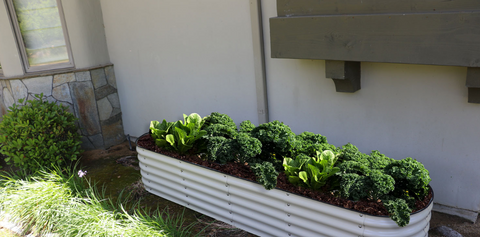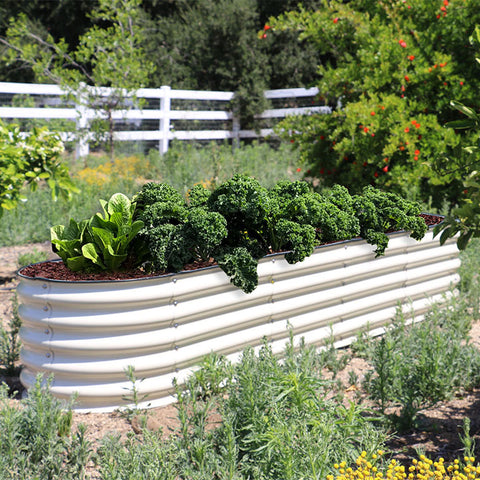Tips from Olle Garden Bed:9 Pruning Mistakes That Seriously Harm Your Plants
Pruning is an essential garden maintenance task. Most plants need some sort of pruning throughout their lives - especially shrubs and trees.Some gardeners are afraid of this time, while others like the structure and interaction with plants. But no matter which side of the fence you fall on, there is no doubt that you need to do so. The following content also has some reference value for raised garden beds.
As one of the more technical gardening tasks you will complete throughout the year, pruning may not always be correct. There are many things to consider, from the time of trimming to the amount of trimming to be completed, it is easy to make mistakes.
As one of the more technical gardening tasks you will complete throughout the year, pruning may not always be correct. There are many things to consider, from the time of trimming to the amount of trimming to be completed, it is easy to make mistakes.

If you make one of these 10 mistakes, please rest assured that you are not alone. These mistakes are very common, even for experienced gardeners. Fortunately, if you know what to avoid, they are also very easy to prevent.
- Use a blunt instrument
The first mistake many gardeners - even some professional gardeners - make is to use a blunt instrument.
This is usually not due to ignorance (we all know that it is much easier to trim with sharp scissors), but laziness. I don't blame any gardener for forgetting this critical step. Who would like to spend time grinding tools in the garden?
However, skipping this step is the downfall of many gardeners.
Blunt shear is very difficult for beginners to use. They do not cut cleanly and require more power and manipulation to complete the work.
But apart from the extra effort, they are not good for plants.
In most cases, the goal of pruning is to encourage plants to grow better, stronger, and healthier. If a branch is damaged by blunt cutting, it is more likely to face trauma and stunting. These rough wounds will not heal quickly, and may peel off the bark or stem, thus forming a larger open wound that is vulnerable to injury.
This may be a tedious task, but when you see the healthy growth of your beloved plants, you will not regret spending time.
- Use dirty tools
There are two things you should never trim with tools. As we have seen, the first is straightforward. The second one is dirty.
Gardeners are notorious for picking up pruning shears under any conditions and jumping into the garden for quick cleaning. Although some people may thoroughly clean them after a long afternoon meeting, few people remember to do so after cutting off one or two branches. However, keeping these tools continuously clean is essential to prevent a dangerous threat - disease.
Fungal and bacterial diseases are common in family gardens. They like to hide in some evil places and wait for strike. One place is your gardening tools.
If you recently pruned a diseased branch on a plant, using the same scissors to trim another healthy plant may spread the disease. You may not even notice that you have transferred the disease until it is too late.
In addition to this risky problem, keeping tools dirty will also reduce their quality. If not kept clean and properly stored, metal tools will rust faster and become less useful.
Save another trip to the nursery and take care of the nursery you own. You will also help your wallet and plant.
- Wrong cutting
Once your tools are ready, you need to address pruning techniques. The seemingly simple task - cutting off branches - may be your downfall if you do it incorrectly.
The main concern is resettlement. The cut needs to be cut in the right place to ensure that the plant grows correctly. This is particularly important in tree pruning.
Cutting in the wrong place - for example, cutting too close or too far from the tree trunk - can cause healing problems, leaving the tree vulnerable to disease and decay.
For soft stem plants, the cutting is usually done above the leaf node. This encourages the plant to grow new stems from the nodes, thereby improving growth. If the node is cut too close, it may be damaged and it will not grow again. If you cut too far above a node, that part of the branch will begin to die, preventing new growth and encouraging disease.
In addition to placement, angle is also important. The cut should always be trimmed at an angle to allow water to flow from the top.
This is especially important for plants with thick branches. The straight and flat incision can accumulate water, prevent the incision from healing, and cause the branches to rot.
- Massive pruning in growing season
As plants begin to grow during the growing season (usually spring), new leaves and stems form rapidly. These leaves provide more energy for plants through photosynthesis, making them grow larger. If you cut too many of these new leaves and stems, you will interrupt the growth cycle and cause shock.
A lot of pruning at the wrong time will cause irreversible damage to plant growth. Plants with slow growth or interrupted natural growth may take years to recover, even if they are completely recovered.
If necessary, it is best to preserve heavy plums during the dormant season of the plant. Many plants do not require such intensive cutting. It is better to make too few mistakes than too many, especially at the wrong time.
- Light trim at the end of the season
At the other end of the spectrum, we trim slightly in the wrong season.
Light pruning includes cutting some branches here and there to promote new growth and branches, and even including withered flowers to encourage more flower growth. This is usually done during peak growth periods because plants grow more vigorously.
Light pruning encourages new, tender growth. If this is done at the end of the growing season (around autumn), this new growth becomes vulnerable to cold temperatures.
Depending on the plant, new growth is usually more vulnerable to cold and frost damage. If this new growth dies, it will hinder the growth of plants or cause decay, thus encouraging disease.
Light pruning is best kept until the beginning of the season when the plants are still young, and only when necessary.

- Over pruning
No matter what time of year, the risk of over pruning always exists. Some plants require little pruning to maintain their shape, while others require no pruning at all. It is important to assess the needs of plants and prune only when absolutely necessary.
Any cut you make on a plant, whether old or new, will leave an open wound. Although plants can heal these wounds and become stronger, they are still the wounds that make plants fragile. Excessive pruning does not properly train plants and help them grow, it will only cause further stress.
If your plants need careful pruning, it is better to prune them in stages rather than all at once. Allow two weeks between each layoff to allow the factory time to recover and adjust, so as to limit potential problems in the future. Depending on the plant, you can do this as many times as necessary to reduce the plant to the desired size.
Overpruning can also be a risk when shaping plants. You may want to give it a special look, or cut it in a way that suits your garden design. In the process, cut it too far.
Whenever you start trimming, always remember that plant health comes first. It is much better to have a slightly deformed plant than a dead one.
- Do not trim at all
The substitution error of over trimming is not trimming at all. This error is usually less risky - plants can survive well in the wild without our help - but it does make a great contribution to the health of our garden plants.
Many plants do not require explicit pruning to help them grow. However, they still need to remove dying or poorly performing branches, diseased leaves or used flowers. If left on the plant, these ugly elements will consume the energy of the plant, which can be put into new growth.
Pruning can also prevent the possibility of pests and diseases, as they tend to attack vulnerable parts of plants first.
Other plants will perform poorly if they are not pruned in the early stages of growth. This applies mainly to fruiting plants, but also to ornamental flowering shrubs.
Early pruning trains plants to maximize productivity and improve shape and airflow. The increased airflow contributes to the results and prevents disease from settling in dense growth areas around the plant.
Check plant requirements to determine the level of trim that needs to be completed before starting.
- Remove the tree top
This error applies only to trees (and some shrubs), but it is also one of the most destructive.
It is called the top, and removing the central leader (the main branch growing upward) will greatly put pressure on the trees.
The central leader is an important part of the tree structure, guiding you to correct pruning techniques, and helping you know which branches to cut and which to save.
Therefore, a strong central leader can ensure the strong growth of the whole tree. If the central leader is cut at the top, several new branches will be formed. These new branches will be weaker than a single central branch and may unbalance the overall weight and size of the tree.
When a tree or shrub is too big for the space for planting it, it usually makes a top mistake. Unfortunately, this is not a good way to control growth. In the long run, it will only damage plants.
Ensure that the mature size of trees is known before planting, or select shrubs that can be reduced to manageable size without any adverse impact.
- Purposeless pruning
Trimming is one of the tasks that may be difficult to understand. There are many reasons for pruning, and each reason may have different techniques. Especially for beginner gardeners, this minefield will lead to a lot of confusion and ineffective pruning, without any purpose, simply because "this is what the gardener does.
Random pruning without any goal or purpose may lead to uneven growth and excessive plant pressure in the garden.

As mentioned earlier, pruning can cause open wounds, and plants need time to heal. If you exercise without a plan or reason, technically, you will hurt plants unnecessarily. It may not immediately affect growth, but constant pruning in this way ultimately does more harm than good.
Purposeful pruning also determines the technique used. Gardeners who want to downsize and others who want to promote growth may have a completely different process.
By knowing what your goals are before you start, you can ensure that you achieve them at the right time using the right technology.
In the final analysis, it is better to save the pruning shears for a rainy day
